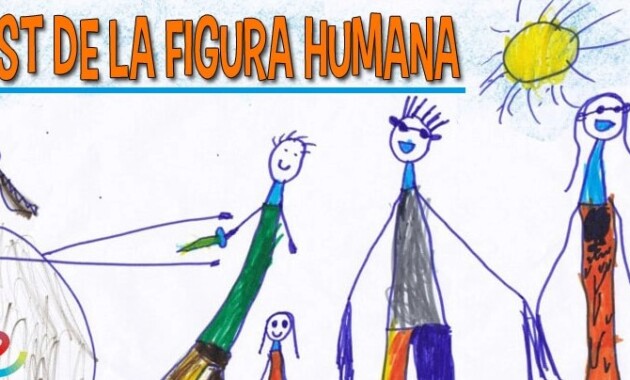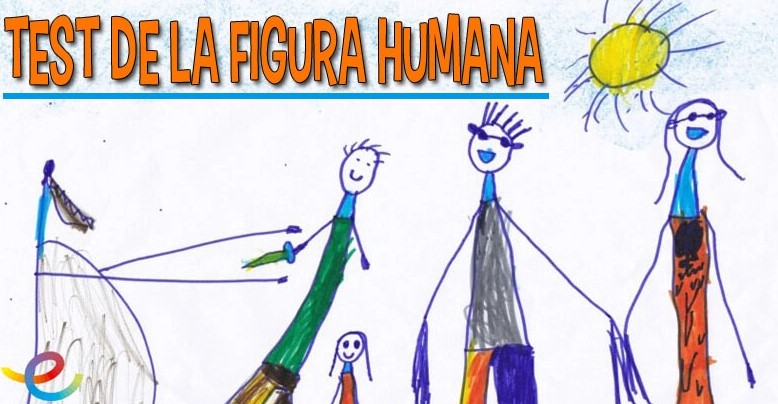
test de la figura humana instrucciones
Daftar Isi

test de la figura humana instrucciones It is one of the tools used in the psychodiagnostic process of all ages because it provides a lot of information about the patient’s personality. This test can be used in both clinical and educational settings. Therefore, this article provides information on which indexes you should pay more attention to and which elements of the drawing will provide more information about the cartoonist.
WHAT VALUE WAS THE CHARACTER TEST?
Karen Macover’s human test is about projective tests that serve to go beyond what one can express about oneself and allow one to deepen and form hypotheses about thinking and intellectual abilities. development and their unconscious conflict.
- In the specific case of the human figure test, studies have shown that drawing a human face produces the closest expression of an individual’s personality.
- At the same time, the models and the deepest root values are visible, because they are the ones on which the number is based.
- Another important detail that you can measure with the test is that your drawing will tell you how you drew it or what you didn’t draw, what trouble your own picture will have.
- It also allows them to determine the level of their mental and intellectual development.
The human figure test is normally taken together with the house, tree, person (HTP) test, this is the person test. Instead, it is usually added to the Family Test.
HOW TO GET AFTER THE CHARACTER TEST
The Karen Macover Human Character Test is one of the cheapest psychological tests, unlike other types of tests, you can spend a lot of money on a purchase to do this, in which case you only need stationery. . For the correct interpretation of the drawing, it is of course important to do good practice in projective tests.
You must have two sheets of paper, a pencil and a cloth to pass the test.
The indication a person should give is to “draw a person,” whether he is a man or a woman, just to draw a person.
If a person who sees an indication of test administration may be nervous, obstructed, or reluctant to draw, it is important to note that the drawing is not checked for its artistic quality, that the only thing I tried to draw right, to know you better.
When collecting data, you should consider:
- What he said or did after giving the sign
- The time required to start drawing, the time required to create a drawing.
- The order, the order in which he draws.
- What is erased or what is more expensive for you to draw
- Sentences or comments that you make when drawing.
Once he draws, it’s time to ask them to write a story about the person he draws. After telling the story of your drawing about the past, present, and future, you need to give it a name and an age. All the associations you create are important and can provide important information for the correct interpretation of the test.
After the story, he was given a second page and instructed to draw “one opposite sex” than the one he was drawing. The instructions are the same as for the first issue, at the same time you have to do the same to gather data and write a story.
INDICATIONS TO BE FOLLOWED AFTER THE IMAGE TEST
There are three basic aspects to consider when testing these features:
- The first step is to pay attention to the first impression, what emotions he questions in the first place.
- The second step is to pay attention to each of the elements that make up the drawing, important elements: the size of the drawing, color, its distribution in space, movement …
- And third, the integration of each of these elements.
When a psychologist passes this projective test, he should be careful from the first moment to observe the order of drawing where he begins to draw.
WHAT THE SIX IS FIRST
As we showed earlier, the patient is told to draw a person who does not show his gender, this will provide us with information.
If the first person you draw is by gender, that means you identify them. If you first draw a number that is not based on your gender, it may reflect internal discrepancies about your sexual identification.
PICTURE TRACK
Another aspect that we must observe when drawing is the type of pencil stroke (as he draws) that the patient uses: wide, tight movements (tendency to close), strength (vitality, strengthening) by luag. (embarrassment, uncertainty, danger).
Where did you live PICTURE
It is also important to keep track of where on the sheet the patient chooses to draw a person, because it shows the level of imagination and reality he has about life, just as it shows, such as fixation. in the past. whether you live in the present or the future. If it takes:
- surface uncertainty, withdrawal
- The basis is pessimism, uncertainty
- correct is negativism, resistance to change, problems of authority
- without restraint, introversion and uncertainty
Magnified by PICTURE
The general interpretation will have to be considered later if it agrees with other information, so if the size of the figure is very large (more than 20 cm), it may be related to the lifting of the ego. Greater inclination to imagination and underestimation around.
As for any “normal” size, it is interpreted as an indicator of emotional balance.
If the drawing is smaller than 12 cm, it may mean that the environment is valued, that it seems small and invisible.
GI-SHED
If some kind of shadow is cast, which means greater devotion to the work, the drawing may indicate that there is a point of fixation or fear.
Another element to which attention is paid is the integration of the properties of the drawing, because it is considered to indicate the quality of the connection, ie the strength of the personality.
Relevant information is provided with elements that can be called “interesting”, such as pulling three hands with one hand, eyes closed or someone missing a part of the face. , among many options. This is important because there will be talk of a person in conflict.
If a person’s drawing elements are lost or another type of projective test is seen, it can be seen that there are difficulties in this specific area, especially important if the missing element is the hands or feet.
BREAKING OR CROSSING OF BODY PARTS
Some equally important elements are erased or omitted, they may show us a perfectionist human nature or that some damage has occurred depending on whether the drawing is larger or smaller than the first. To do this, we compare the figures in two drawings. TRANSPARENCY – YOU ARE BODIES
In the case of children, it is very common for a child to have some transparency, and in the case of adults, there may be a drawing that indicates an obstacle, which means that there is a problem with communication.
DRAWING TOPIC
The type of drawing you do is important, self-portrait as a funny or unique character is not the same. In later cases, it may indicate an attempt to escape and flight, insecurity and depression.
LIFE
As for the story, it is important to see in the drawing the age it indicates, because it allows us to see where it lies, what or whom it represents, whether it is according to its age or whether it is. what repetitive, ensfh.
IMAGE TEST UPDATE
Although many psychologists do not use this type of projective technique, the fact is that it provides important information about the person we are working with, information that is often projective and unconscious and that can be supplemented by other types of techniques. . Psychodiagnostics is an essential part of every type of therapy, for which it is important to know what type of person we are working with and what treatment is best for him.
Have you ever used or passed the Human Figure Test? What is your opinion?
TEST MANUAL for human figures
Some guides that can help you perform this test are:
- Human Figure: Projective Test by Karen Macover, Juan Antonio Portuondo. Publish a new library
- Personality projection in the drawing of a human figure. Macover. New library.
- Fernandes Sisto, Fermino (2007). Drawing a human figure: analysis of different functioning of criteria.
- Portuondo (2001). An image of a man. Karen Macover projective test. Madrid: Editorial new library.







